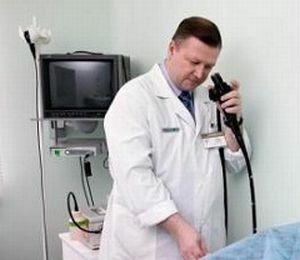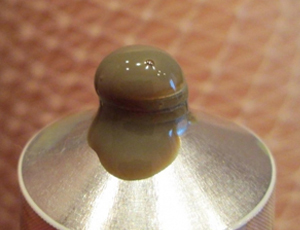 According to statistical data, about 60% of infants and newborns suffer from such an insidious disease as paraproctitis.
According to statistical data, about 60% of infants and newborns suffer from such an insidious disease as paraproctitis.
The inflammatory process is formed as a result of infection by the pyogenic microbes of the fiber surrounding the lower walls of the rectum.
The most dangerous disease is considered to be in newborns. It is rather difficult and fraught with serious complications. Such babies can not be treated with folk remedies, urgent hospitalization is needed.
The disease is insidious in that:
- is possible intoxication of the entire body of the child;
- there is a sharp increase in temperature;
- in more complex cases begins peritonitis and even sepsis.
Contents
- Features
- Features of the clinical picture
- What is characteristic of the acute form of the disorder
- Therapy of the acute form of the disease
- Treatment of the chronic form of the disease
- This is indeed very dangerous
- Prevent the disease!
Provoking Factors
Newborn babies have very delicate skin, and their mucous membranes are thin and easily erect.
Therefore, if you misuse diapers, with constipation, diarrhea and injuries, this disease may occur. Very little abrasions and abrasions are often infected, and the inflammatory process can not be avoided.
Even passing parts of dense feces or frequent and severe straining can cause paraproctitis, most often the disease is diagnosed in infants from birth to six months of age.
Features of the clinical picture
Characteristic signs of the onset of the disease are the following:
- temperature rises to 39⁰C;

- observed the restless behavior of the child for no apparent reason;
- the baby refuses to eat;
- does not show any reaction to the closest;
- act of defecation is accompanied by strong crying;
- pain shock is the cause of stool delay, which significantly worsens the general condition.
The formed abscess can break out. In this case, a fistula is formed and pus begins to appear. The flow of pus into the anal fissure can cause more dangerous consequences.
It should be known that paraproctitis in infants is accompanied by the appearance of small seals on the skin at the anus. There is redness. Even in the absence of temperature, this area is hot to the touch and very painful, and the hole itself is slightly changed.
No advice from friends and folk recipes will heal. Many advise baths and therapeutic ointments, but this will only complicate the situation. If the doctor confirms the diagnosis, then you need to start immediate treatment.
What characterizes the acute form of a violation
The course of the disease depends on the area of the infected site. For acute paraproctitis in infants, the
- formation of ulcers occurs under the skin;
- in the sciatic and rectal form the deepest parts of the pelvis are infected;
- in the pelvic-rectal form, the infection affects the areas located under the peritoneum.
 During the first 24 hours, it is possible to identify the signs of acute paraproctitis. Already on the third day from the anus can pus and a lot of mucus.
During the first 24 hours, it is possible to identify the signs of acute paraproctitis. Already on the third day from the anus can pus and a lot of mucus.
If there is an abscess near the anus, the doctor will quickly determine the disease and prescribe the necessary treatment.
If the infected area is deep, then the external examination is ineffective, more research is needed. The size of the tumor can vary from one centimeter to three or four.
If the inflammation is localized in the submucous area of the lower part of the rectum, then submucosal acute inflammation should be suspected, which is characterized by:
- in this case, the child is concerned about the process of gas escape and passage of stool in the rectum;
- during finger examination reveals soreness in 1-2 cm from the transitional fold;
- during the day, the swelling slightly softens;
- during anoscopy revealed mucosal edema and the presence of bleeding;
- puffiness occurs in some parts of the rectum, there is a delay in urination;
- with the further development of the disease formed fistula, and the infection is able to hit many parts of the cellulose.
Acute form of illness
Treatment of children with acute paraproctitis is carried out only in a medical institution.
The early stage of the disease is characterized by the use of conservative therapy, which includes the following procedures:
- antibiotics are prescribed;
- microclysters are made with broths of medicinal herbs( chamomile, calendula);
- applies methods of physiotherapeutic treatment;
- it is recommended to make baths with warm water;
- strict adherence to hygiene and regimen.
If the subcutaneous type of paraproctitis is diagnosed, then the general condition of the infants changes insignificantly. 
There is a slight increase in temperature. The child begins to be capricious. On the peel near the anus, there is a swelling. Palpation allows you to feel a dense tumor in the form of a ball, with pressure it is painful.
If there is an ulcer or several, the best and most effective is the surgical intervention. To do this, with the enema free the intestines from the stool.
The operation is performed using a special anesthesia, to the general is added local anesthesia. At the next stage of the operation, percutaneous puncture of the site where the abscess is located is performed.
For analysis take pus obtained, and the wound is washed with an antibiotic. This helps to get rid of further infection of the intestinal walls.
Important in the treatment is the definition of a purulent stroke, by which pus from the near-sphincter space enters the remote areas. This stage helps to make the right choice during the operation.
In this case, purulent masses from the intermuscular region can penetrate into another part of the cellular space. To determine the position of the stroke, ultrasound or sounding is used.
Treatment of chronic form of the disease
Treatment of chronic paraproctitis in newborns is very difficult, because the child is still very small.
The presence of a bacterial infection is determined by making a general blood test, determining the white blood cell count and ESR( erythrocyte sedimentation rate).Treatment of the chronic form of the disease is conservative. This is due to the fact that children under 2 years of age are not recommended to perform  surgical intervention.
surgical intervention.
In this case, use antibiotics, Vishnevsky ointment or ichthyol. Prescribe anti-inflammatory supplements in addition.
If the child is 2-3 months old, then he is bathed in disinfectant solutions, preferably 3 times a day. When the baby learns to sit, it is recommended to make sedentary baths with the addition of disinfectants.
This is indeed very dangerous
If a spontaneous breakthrough occurs, incomplete fistulas may form in the area of the rectal or intercostal area. It happens that the fistula can pass through the sphincter.
For infants, acute pelvic-rectal paraproctitis can develop into the initial form of sepsis, which is characterized by:
- , a sharp soreness is felt on palpation;
- temperature increase up to 40⁰C;
- the kid does not react to toys and words, he is sluggish and inactive;
- there are problems in the work of the heart;
- begins frequent vomiting, which indicates the onset of general toxicosis.
The most dangerous complication of paraproctitis in small children is its anaerobic form, which is rare.
With this disease, the overall condition of the baby dramatically worsens. The inflammatory process develops very quickly. This can lead to significant destruction of the walls of the rectum.
You can prevent disease!
To prevent the development of paraproctitis, it is possible if: 
- to ensure that the infant feeding is rational;
- to carry out hygienic care for the baby, especially in the anus;
- in a timely manner to remove all the discharge from the rectum;
- to carry out preventive measures to prevent pustular diseases.
Paraproctitis is the most common disease among all proctologic ailments. The treatment is quite severe, and the disease can cause complications in the form of colitis, hemorrhoids and anal fissures. Therefore, it is better to prevent the disease than to treat it for a long time.
